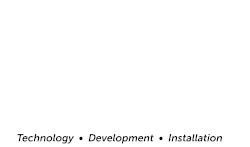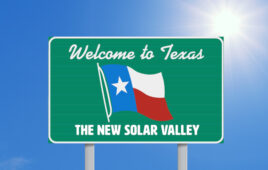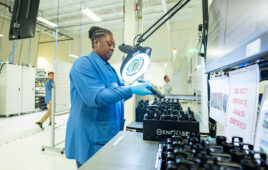The installer’s role in the solar industry is handling the physical construction of solar arrays. Whether that’s on a rooftop, on the ground or any other surface suitable for solar, the installer is responsible for putting that panel in place.
Yet there are certain conditions that must be met for permitting, interconnection and training accreditation before that installer can start construction. The issues surrounding solar construction — details like interconnection and permitting policy, that without preparation can slow deployment within communities unfamiliar with solar — are often addressed by clean energy nonprofits and industry advocacy groups.

Before merging with the Interstate Renewable Energy Council, the National Solar Jobs Census was published by industry group The Solar Foundation. IREC
For everything involving solar that isn’t construction or manufacturing, there are clean energy nonpforits like the Interstate Renewable Energy Council (IREC) laying the groundwork to create favorable conditions for solar construction.
“Our mission is to build the foundation for the rapid adoption of clean energy and efficiency to benefit people, the economy and the planet,” said Larry Sherwood, CEO and president of IREC. “We’re often working on issues behind the scenes that are foundational or critical for the industry to succeed and build actual projects.”
IREC was founded 40 years ago as a membership organization made up of people in state energy offices working in the renewables sector. It eventually became an independent nonprofit organization focused on fact-based initiatives supporting renewable energy deployment in the United States.
Last year, The Solar Foundation, another independent nonprofit organization that was known for publishing the annual “National Solar Jobs Census” merged with IREC, folding both groups and their services into one. However, IREC serves renewables markets beyond solar.
“Many of the groups are really siloed in solar or wind or energy efficiency, and IREC really sees the whole picture and how all of these different industries and technologies need to integrate together,” Sherwood said. “I think that is incredibly valuable and critical if we’re really going to reach aggressive clean energy goals.”
That mission has translated into programs like training what IREC refers to as “allied industries,” or the people whose full-time job isn’t solar, but whose work is necessary for completing projects. People like firefighters, code officials or building managers can be integral to approving, receiving or finalizing solar projects, and IREC has found that preparing them for future solar deployment makes the process simpler when that time comes.
Foundational work in solar
All The Solar Foundation’s programming and employees were carried over to IREC in the merger. In the solar space alone, IREC is publishing the Solar Jobs Census, running the preparatory program SolSmart, accrediting solar training programs, hosting the Solar Licensing Database, tracking community and school solar projects, assisting development of automated solar permitting program SolarAPP+, facilitating solar projects in Puerto Rico and helping military veterans find solar jobs.
“It’s important to have this entity like IREC and others that are funneling information back and forth and creating bridges between educators, workers and employers, because we know from the 2020 census that just in terms of solar, we need 900,000 more workers by 2035,” said Leslie Graham, director of development at IREC. “There needs to be other groups pushing to reach these climate goals. It can’t be a laissez-faire thing.”
IREC will soon publish the 12th Solar Jobs Census. The annual report is created using voluntary surveys sent to solar industry members. That data is broken down by job types, demographics, wages and regions, and includes details on national installation numbers.
“The Solar Foundation began publishing the report because there was no other independent, authoritative source of information on how many solar workers there are,” said Avery Palmer, communications projects director at IREC. “Over the years, it allows us to show how the solar industry was growing and changing over time. Back a decade ago, the solar industry was still in a fairly nascent phase, and as it took off, we could see how the job growth expanded the industry.”

The Interstate Renewable Energy Council (IREC) is assisting development of solar projects in Puerto Rico, including this one atop a health clinic in Loiza. IREC
The census gives the industry a year-by-year record of solar employment and deployment numbers. In the 2020 report, there was a 6.7% decrease in overall jobs from 2019, but more solar was installed.
For legislators, the census is a tool to make a case for more solar-friendly policies that could encourage more job growth. Union data, compensation and employment forecasts are all detailed in the report. Then, those numbers are shown alongside overall U.S. employment data to show how solar compares to other domestic industries. It also reports on the diversity of the industry and where solar companies can improve to be more equitable.
“We can be stewards of diversity, equity and inclusion, asking big companies and specific markets to focus on those goals and watch them develop,” Graham said.
And it isn’t compiled by IREC alone. The Solar Energy Industries Association (SEIA) has been a longtime collaborator on the Solar Jobs Census, BW Research administers the survey and, for the first time, the 2021 report will be assisted by the Department of Energy, using data from the department’s “U.S. Energy and Employment Report.”
“I think the ‘Solar Jobs Census’ would be included as part of our workforce development activities because this report has a variety of information not only about the number of jobs, but about solar workforce needs and how to meet those needs,” Palmer said.
IREC doesn’t administer job training directly for solar installers, and instead accredits training programs. The organization will connect trainers and solar subject matter experts to build these training programs. IREC has Solar Ready Vets, which places retired military service members in fellowships, apprenticeships and workforce development programs for careers in solar.
Another program carried over from the merger with The Solar Foundation is SolSmart, a free program to help cities, counties or regional organizations address inefficiencies in interconnection and solar permitting and inspection. IREC and the International City/County Management Association partners with organizations familiar with construction permitting, local governments and the solar industry to give technical assistance to reduce barriers to solar energy development.
“The overarching goal of SolSmart is to reduce the soft costs of solar installation because that’s what’s holding people back from installing or expanding solar installations,” Graham said. “If they can reduce permitting time, reduce the overhead, then the costs go down and the projects can go faster.”
Funding the work
Nonprofit organizations like IREC operate using a mix of grant funding, donations and corporate sponsorships. Not every program will be supported by a grant, so those other financing methods are necessary to produce reports like the Solar Jobs Census, which is funded through corporate sponsorships.

One of IREC’s services in solar is the SolSmart, a program that assists municipalities, counties or regional organizations with lowering the barrier to solar development. IREC
These nonprofits don’t exist without support from the industry that they’re supporting, and that goes beyond just donating money. There are opportunities for solar industry members to donate their time, too. For example, IREC started the National Clean Energy Workforce Alliance in December from the Bank of America Charitable Foundation donation and is seeking people invested in renewable energy to get involved. Or industry members can help by filling out the survey for the 2021 Solar Jobs Census.
As the solar industry continues to expand into new U.S. markets, solar advocates will be there to help with the growing pains.
“I think that’s the kind of issue that an organization like IREC, that’s working in the public interest, can work on. A private company is going to have to focus their efforts on where the profits make the most sense,” Sherwood said. “But it’s not necessarily private companies that are going to build the foundations in those markets. We want to see solar everywhere — all states, all markets, all places.”





Tell Us What You Think!